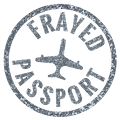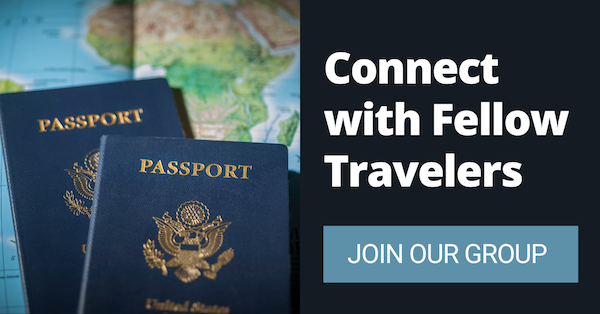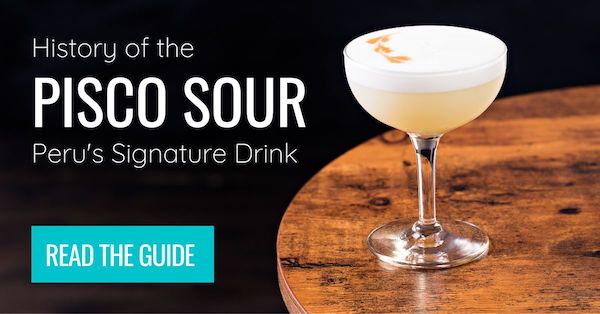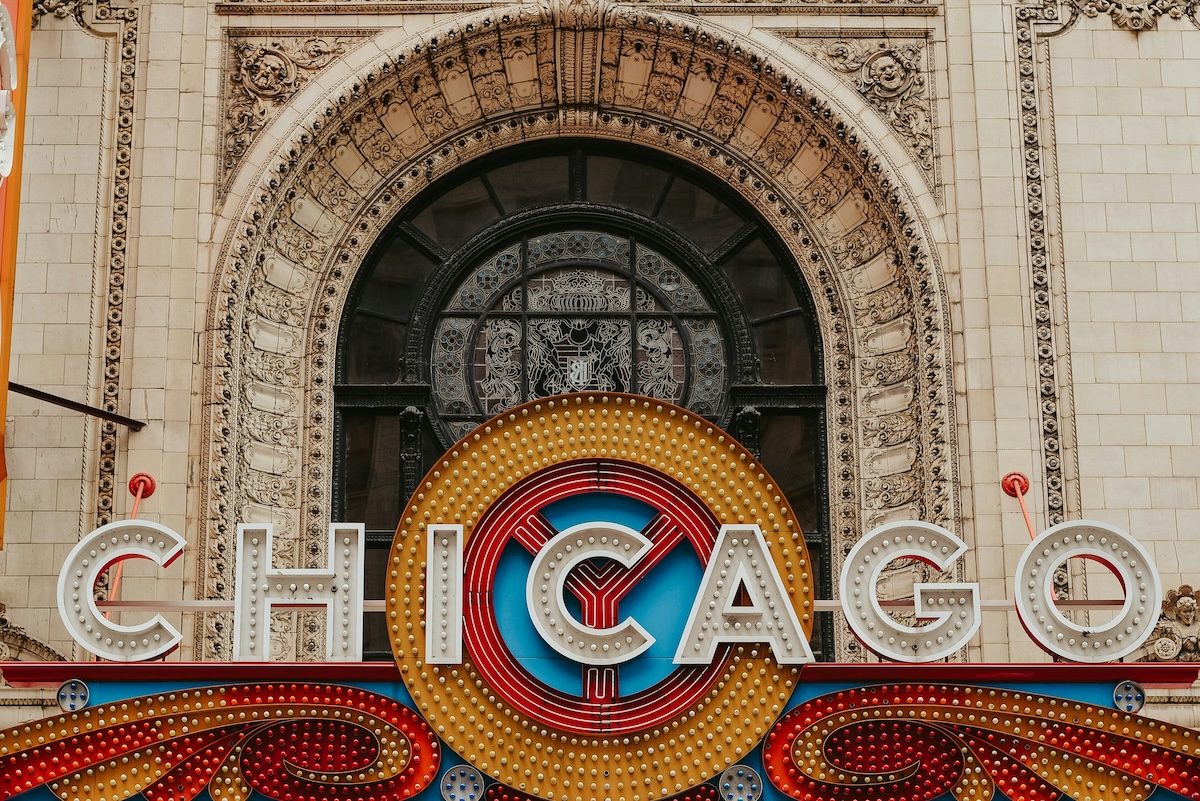
One Town That Won’t Let You Down: Trains, Art and Baseball in Chicago
Skip to Section
Amtrak fans gotta love Chicago.
Depending on direction of travel, more than half that railroad’s long-distance runs either finish or originate in the Windy City; so folks committed to overnight Amtrak are pretty much committed to Chicago as well—perhaps for more than just a quick train-transfer.
Happily, this town makes a truly terrific host—as a friend and I discovered while gearing up for Amtrak’s newest route.
Bucket List
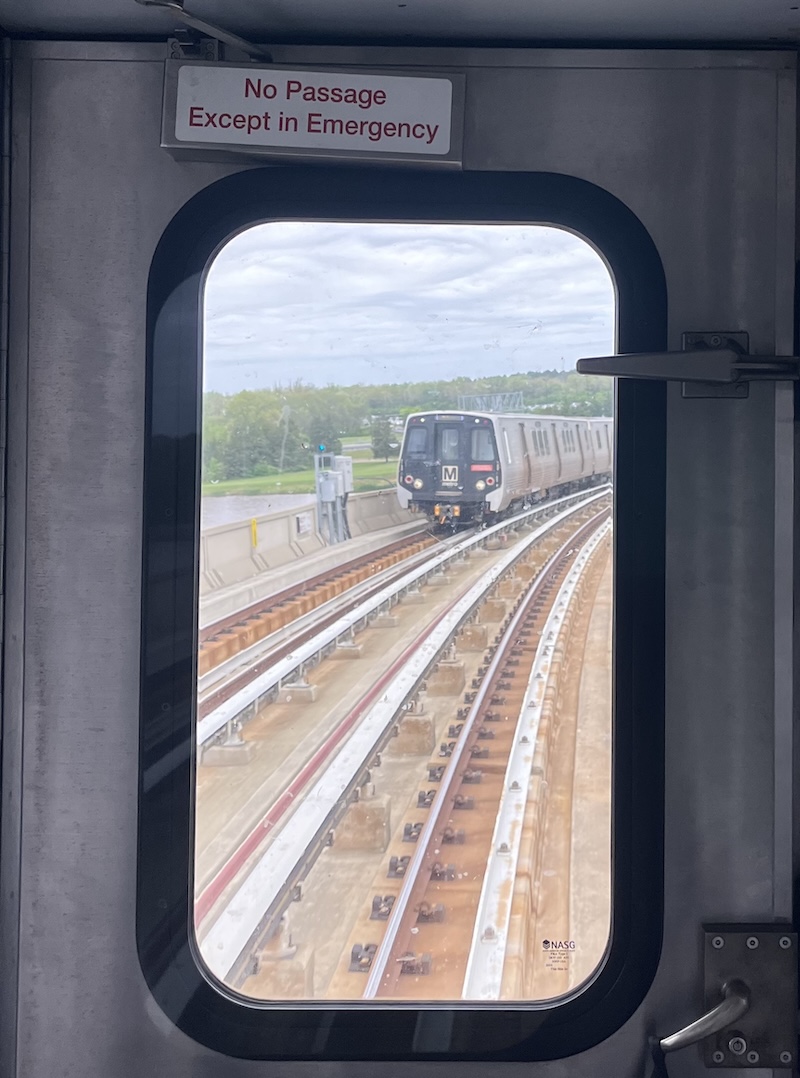
One train meets another on Washington DC’s Metro as the author travels from Dulles International Airport to Union Station downtown.
That would be the Floridian, which combines a pair of existing trains for the line’s only two-night ride east of the Mississippi: daily in both directions between Chicago and Miami. (For details, see full story here.)
Since we live in the Northeast, my pal and I opted for the southbound trip, with a preceding night in Chicago to catch the Cubs at Wrigley—a long-time bucket-list item for me.
And what better way to reach our Midwestern starting-point than on the Floridian itself?
From my home in Central PA, I flew out of the blissfully quiet little rural airport in State College (SCE), then rode Washington’s light-rail Metro from Dulles to DC’s Union Station—my first time on what proved to be a cheap, safe and user-friendly alternative to a 50-minute ride-share.
Double Dinner

The author settles into his roomette aboard Amtrak’s Floridian after leaving Washington, DC—bound for Chicago the next morning.
John came up from Norfolk on Amtrak regional, and we met at the station’s Metropolitan Lounge for a scheduled 4:05 p.m. departure to Chicago.
Unfortunately, our train, which had left Miami the previous morning, was already running more than two hours behind—and also having problems with its dining-car; so the Met Lounge staff bought us dinner at the station. We shared John’s colossal fried-chicken meal, while I saved my take-out salad for later.
But then, as we finally rolled away around 6:45, our sleeping-car steward informed us that the diner was fixed and we would indeed get supper! Hating to waste food, I substituted my salad for the entrée, taking only dessert and a drink.
Not So Fast
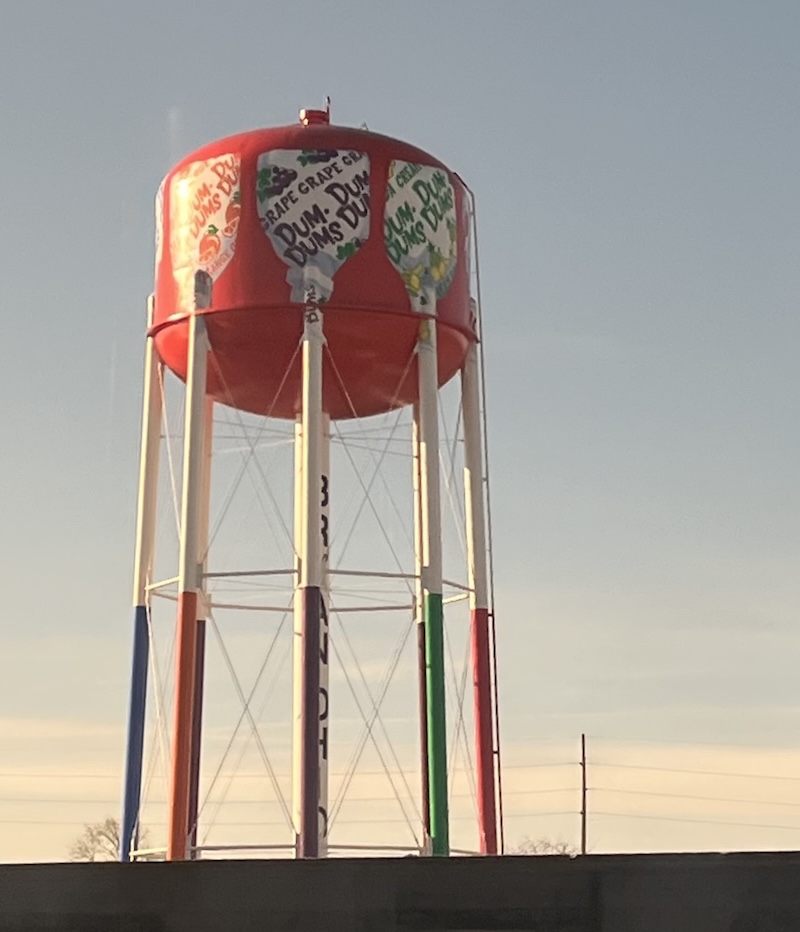
Seen from Amtrak’s Floridian is a colorful and seemingly tasty water-tower at the Bryan, OH, factory where Spangler makes Dum Dum lollipops.
Though our delay pushed some of the Floridian‘s early scenery into darkness, it had the contrasting benefit of daylight for sights this train usually passes in the wee small hours. These included Toledo (scheduled for 5:08 a.m.) and the Spangler Dum Dum factory in Bryan, OH—where the water-tower is cleverly painted to look like lollipops.
After early check-in at our downtown hotel, I caught yet another oddity during an afternoon walk: Out of one convenience store rushed a teen carrying a 12-pack of Modelo Especial; but just as this apparently thirsty youth hopped aboard his bike, a lithe young security guard likewise burst from the shop—then tore the beer away and gestured angrily down the street.
No fisticuffs or calling the cops; just “Give me this, and go away.” Classic Chicago.
Sweating It Out
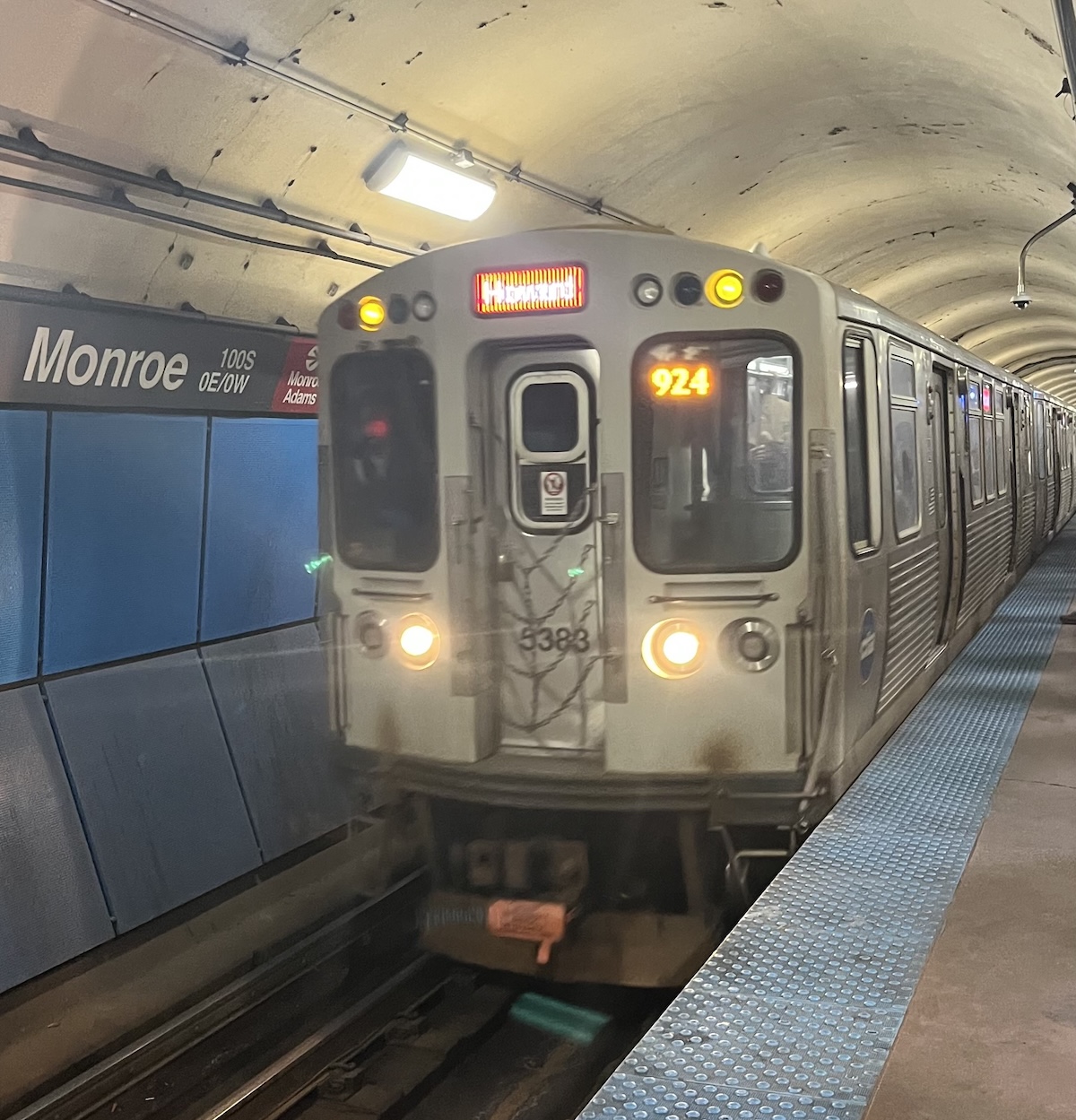
One of Chicago Transit Authority’s Red Line trains arrives at Monroe in “The Loop”—headed for Wrigley Field and points north.
Assured by our concierge that we’d need 40 minutes to reach Wrigley, John and I left 80 minutes early, walking half a mile to the Chicago Transit Authority’s Red Line. There we found the platform surprisingly crowded—and the train even more so.
Though it was mid-April, temperatures inside that jam-packed car swiftly rose into the 90s as more and more Wrigley-bound riders mashed aboard at every stop—while the beleaguered engineer kept begging folks to clear the doors and wait for trains behind us.
For a fan, I loaned my newspaper to an increasingly drenched young lady in the aisle—and then a more experienced rider finally lifted the “emergency-only” latch and opened the door for some welcome city wind in this Windy City.
Needless to say, that agonizing ride took far longer than expected; we arrived at our seats mere minutes before Dodgers leadoff hitter Shohei Ohtani stepped up to the plate.
Chicago Handshake

Chicago’s Wrigley Field seen near sundown from the Addison Street stop on CTA’s elevated Red Line.
Indeed, despite superstar Othani—who on Sept. 19 last year had the most astounding single-game performance in MLB history—what I found most notable was the ubiquitous Dodger-mania. Uniformed fans were everywhere, and stadium-wide chants of “LET’s go DOD-gers!” broke out repeatedly. In all my years of ball at every level, I’ve never seen the home team get less love than the visitors!
We enjoyed fresh-baked Chicago pizza for dinner—plus a legendary local lager called Old Style. Next day aboard the Floridian, two locals described the so-called “Chicago Handshake”—a drink that comprises Old Style and a shot of Jeppson’s wormwood-based liquor called “Malort.”
Apparently this is for brave palates only, since my fellow-rider described Malort’s flavor as “something like stomach acid.”
“So,” I offered, “it tastes the same coming out as it does going in”—to which he assented: “Pretty much.”
Home Run
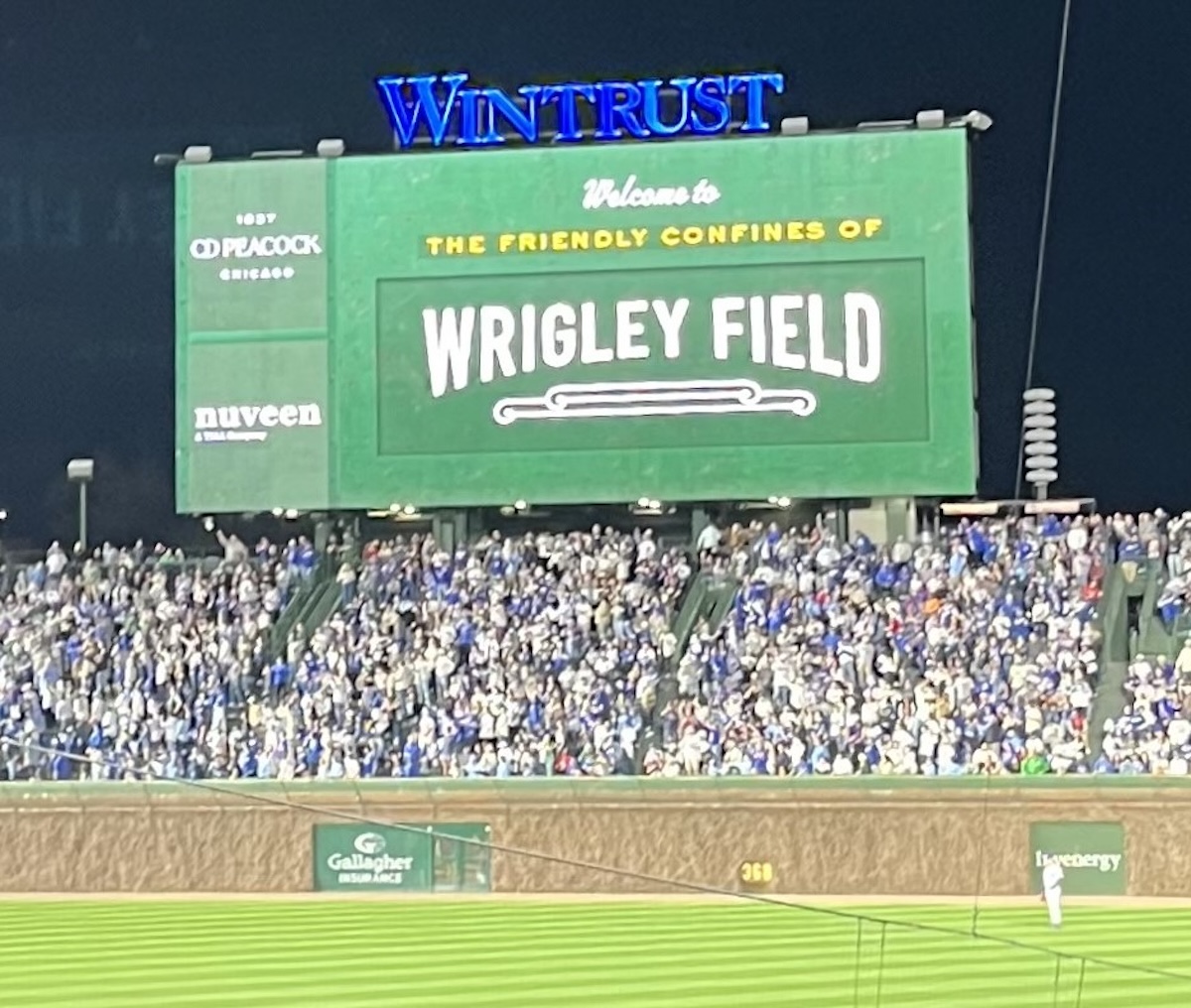
The “friendly confines” of world-famous Wrigley Field, where the hometown Cubs would beat the visiting Los Angeles Dodgers 11-10 in extra innings.
As for the game: It turned into a 21-run shootout, with eight tallies in the first inning alone. The Cubs finally nailed it in extra innings—after tying the score on a solo homer with two outs in the bottom of the ninth.
By that time, however, we too were headed for home.
Having stayed for “Take Me Out to the Ballgame” during Wrigley’s beloved seventh-inning stretch, we left early for the “El,” hoping to avoid a repeat of our inbound fiasco.
No such luck.
Unstoppable
The Addison platform was, if anything, even more crowded than before; and train arrival was delayed by another classic Chicago moment:
One rider flagged down a CTA worker, saying he’d dropped his reading glasses onto the tracks; so the manful staffer phoned to stop trains, then climbed down and found the item with his cell-phone flashlight. When our ride at last pulled up, we joined an eye-opening cross-section of urban America in the car:
To our left, an older woman drank liberally from what must have been a half-gallon bottle of vodka sequestered in her capacious purse. (Having spilled some on the seat beside her, she thoughtfully wiped it with a wrinkled T-shirt from another bursting bag.)
To our right, an acrobatic three- or four-year old girl was climbing all over her mother—punching and grabbing so intimately that John and I finally had to look away. The woman’s muscular mate, standing near her in the aisle beside his bike, also appeared—somewhat less explicably—to be ignoring the assault.
Meanwhile, a nearby infant kept shrieking in that unstoppable fashion which tends to shatter both nerves and eardrums; as Mom helplessly rocked and patted, her mate fished out water, canister, measuring spoon and baby bottle, then calmly whipped up a batch of formula right on the spot.
Nighthawks
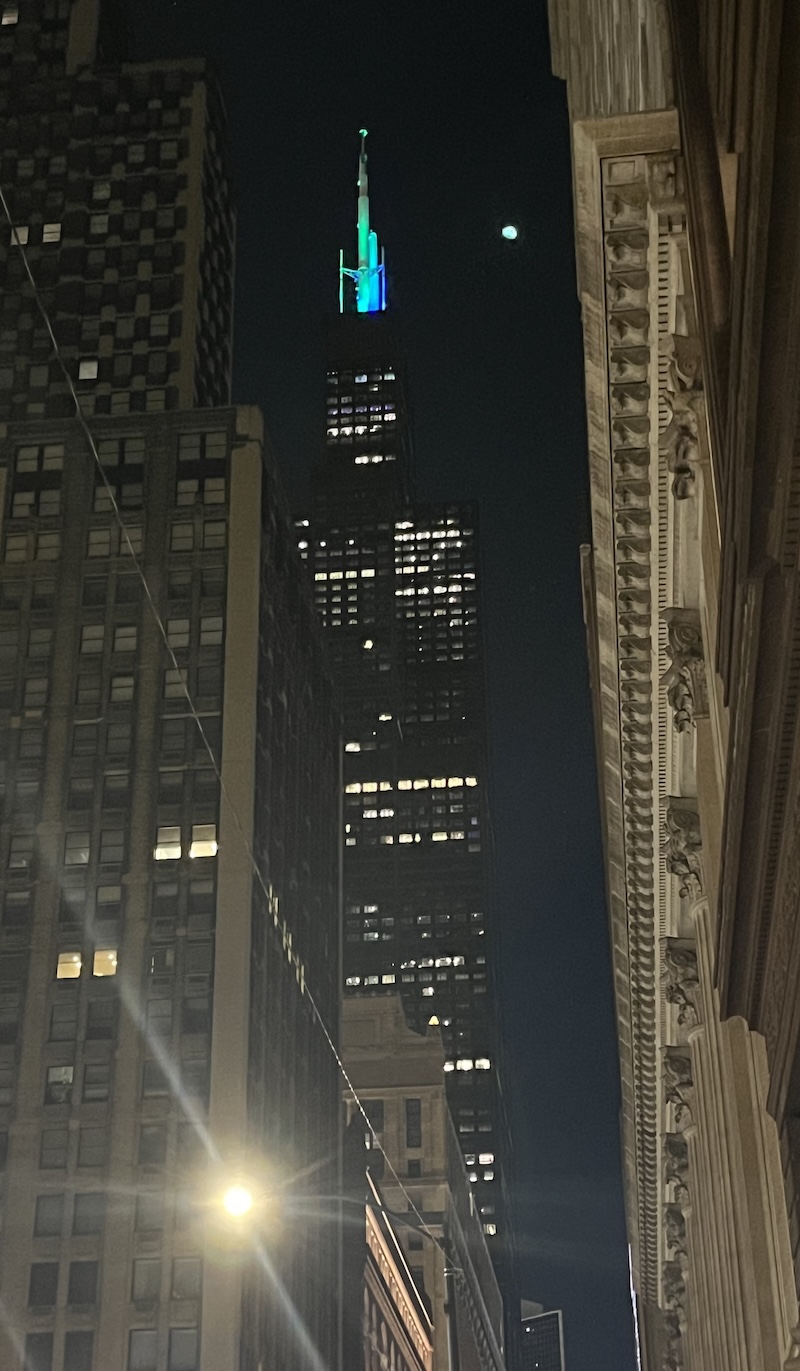
Willis Tower—formerly the Sears Tower—in downtown Chicago.
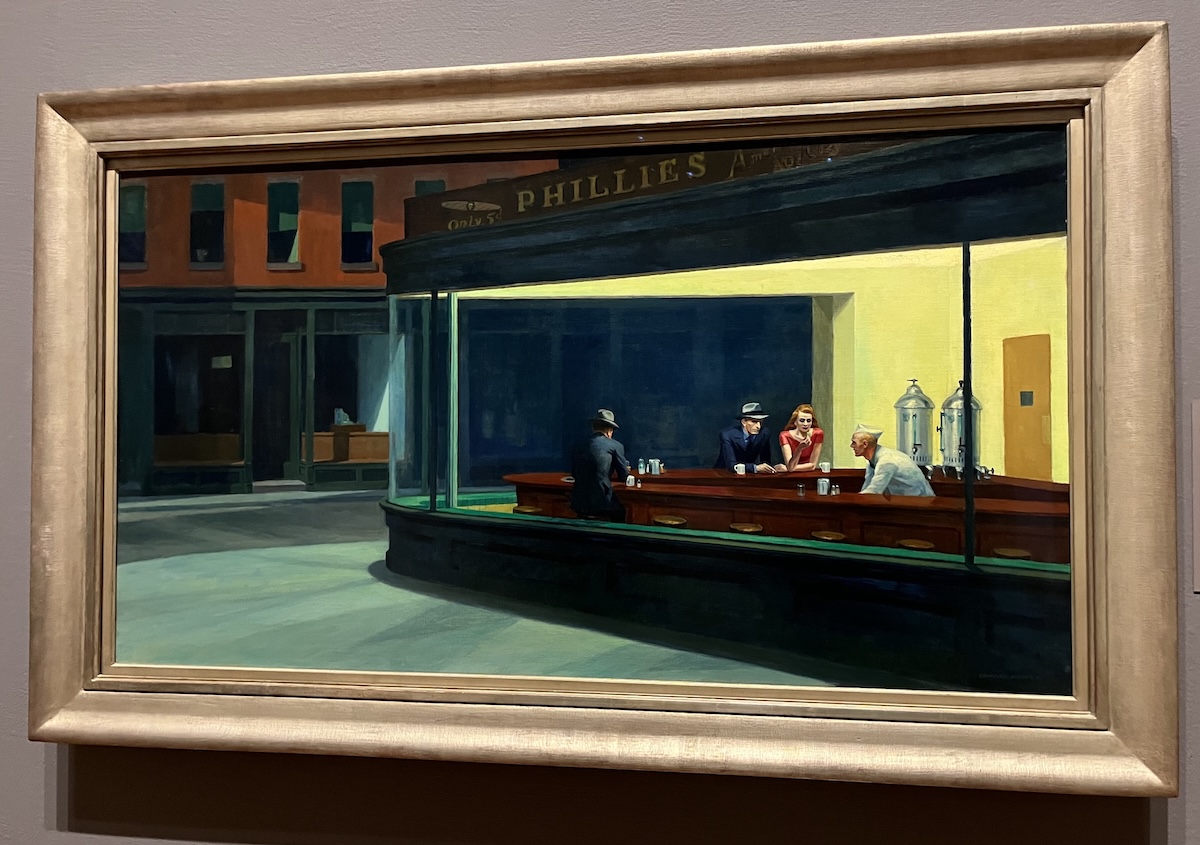
Edward Hopper’s 1942 masterpiece Nighthawks, on display at the Art Institute of Chicago.
Post-train, we followed the rest of the game on a radio app while navigating the few quiet blocks to our hotel—also grabbing a nighttime shot of famed Willis Tower (formerly Sears). And then we bedded down for the night.
Our Miami-bound Floridian departs Chicago daily at 6:40 p.m.—so we had some time to kill the next day. I’d recently learned that Edward Hopper’s renowned painting Nighthawks (1942) was on display at the Art Institute of Chicago, just half a mile away; so we headed there, where John’s admission, as Navy vet, was free.
My own fee was $26—and worth every cent.
Up Close and Personal

Peter Blume’s The Rock, on which the author labored for years, producing 500 preparatory studies before finally completing the work in 1948.
Founded in 1879, this massive stone structure along Lake Michigan holds 300,000 works of art. It embraces all eras—going back to ancient Africa and the Far East, plus American Gothic, Picasso’s Old Guitarist, Seurat’s Sunday Afternoon and Hokusai’s Japanese masterpiece The Great Wave Off Kanagawa.
Heading straight to Hopper, I was not prepared for the overwhelming nature of such works “in person,” as it were. Frankly, it’s been decades since I visited an art museum, and I was simply dazzled by other Americans including Tanner, Cassatt, O’Keeffe, Homer, Sargent and Frank Lloyd Wright.
Yet in this magnificent wing, I was most impressed by an artist I’d never even heard of—Peter Blume and his staggering, surreal, explosively colored The Rock, finished in 1948 after four years and 500 preparatory studies.
Heart and Soul
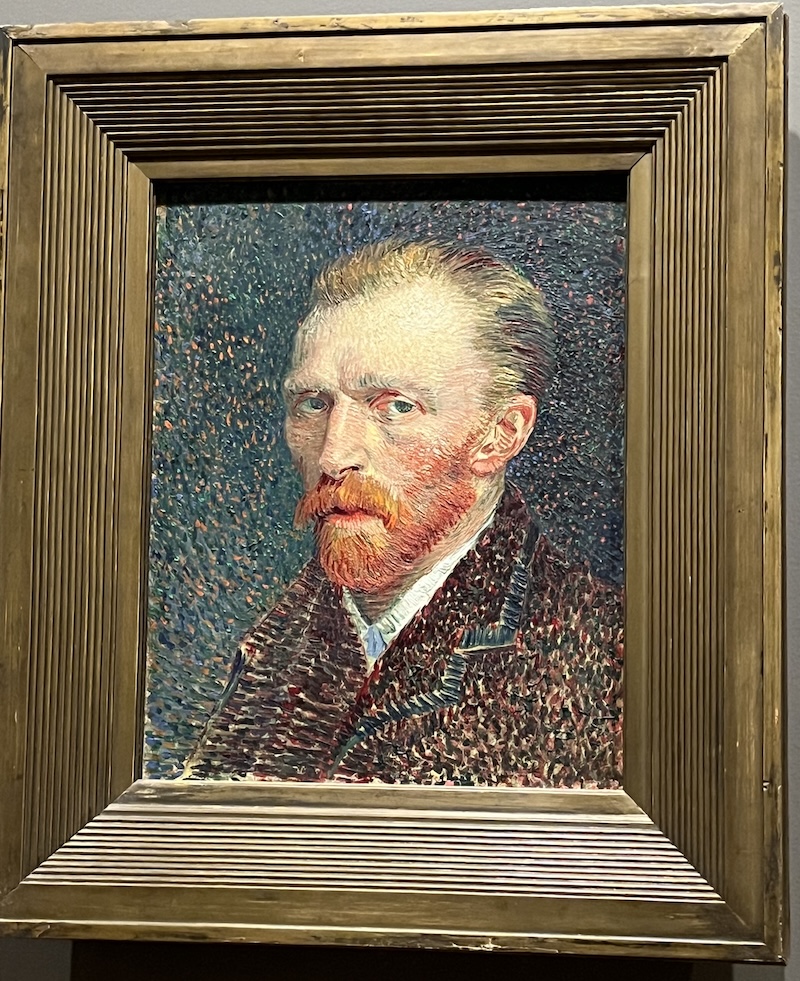
Vincent Van Gogh’s 1887 self-portrait—one of nearly three dozen this artist produced.
Next we made our way to Impressionism, with its even more amazing catalog: Gaugin, Manet, Renoir, Degas, Toulouse-Lautrec and at least half a dozen of Monet’s famous haystacks.
For me, all this reached its apex at Van Gogh’s 1887 self-portrait, which—like many of these works—seemed to be displayed without any protective covering at all. I stood there for several minutes less than a foot away from this heavily textured work in oil, feeling like I was gazing right into the artist’s soul.
“That’s it for me,” I finally said to John—though we’d been in the place just an hour and a half. As he swiftly agreed, I realized that this intimate viewing experience was so deep, so pure and so … spiritual, for want of a better word … that I did not have any room left in my heart for more.
My Kind of Town
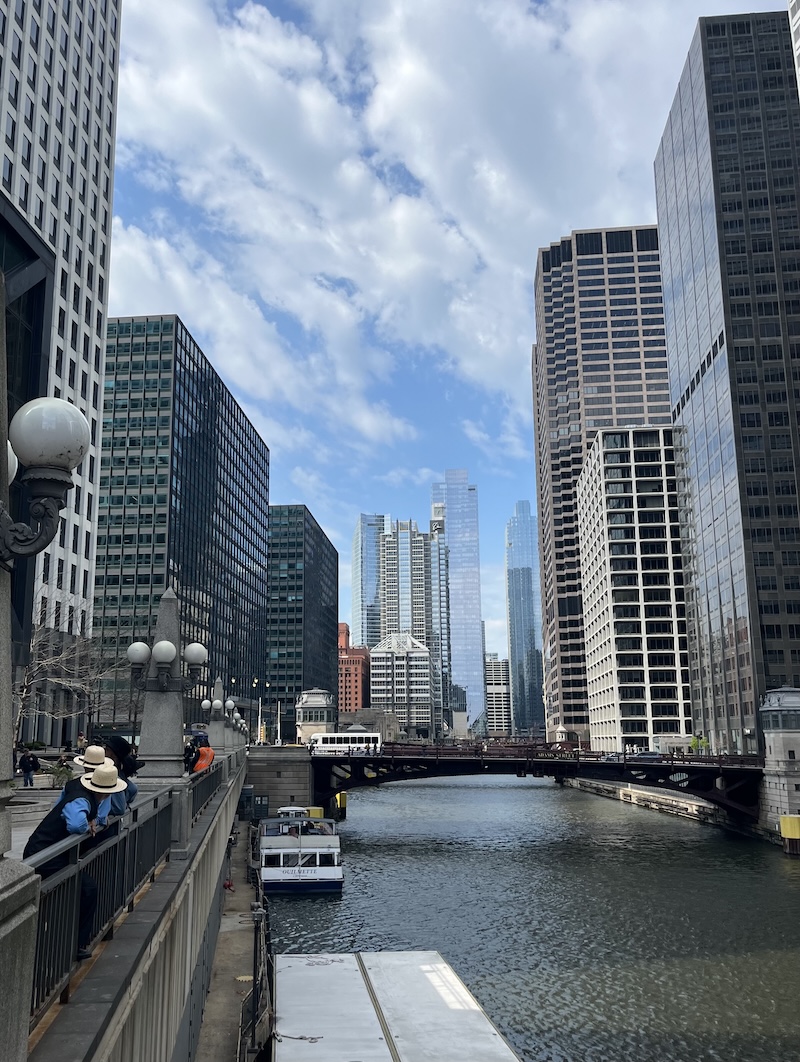
Visitors enjoy the nostalgic Chicago River, here seen just outside Union Station downtown.
That evening’s Floridian would be the 11th long-distance rail-ride for John and me. We’ve traveled all over America on these jaunts; but as we settled into Amtrak’s spacious Met Lounge at Union Station, it dawned on me that Chicago is my favorite among all the cities we’ve been through.
In contrast to many others—Seattle, LA and Manhattan in particular—here I never felt unsafe or grossed out, or sensed that the city had lost its former glory.
Chicago still feels like Carl Sandburg’s “City of the Big Shoulders”; like the town Sinatra sang about—the one where a man actually dances with his wife; the stomping-grounds for Al Capone, Mike Ditka, John Hughes, Mother Cabrini, Studs Terkel and Mayor Richard Daley; the place that loaned its aura to a Tony-winning play and a seven-decade pop band; the “toddling town” that now seems a bit like my home-away-from-home.
We’ll be back soon.
About the Author
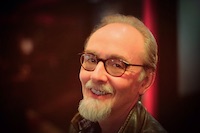 Joseph W. Smith III is a writer, teacher and speaker in Central PA. Published in several websites and periodicals, Joe has also penned books on Hitchcock, the Bible, church life and under-the-radar movies—along with a volume of Great Jokes and Riddles. He plays trumpet in a community band; reads 100 books a year; serves as officer in his local church; struggles to keep cheering for the Buffalo Bills; listens to music whenever not sleeping; and maintains a small collection of unused postcards. He can be reached at robbwhitefan@gmail.com.
Joseph W. Smith III is a writer, teacher and speaker in Central PA. Published in several websites and periodicals, Joe has also penned books on Hitchcock, the Bible, church life and under-the-radar movies—along with a volume of Great Jokes and Riddles. He plays trumpet in a community band; reads 100 books a year; serves as officer in his local church; struggles to keep cheering for the Buffalo Bills; listens to music whenever not sleeping; and maintains a small collection of unused postcards. He can be reached at robbwhitefan@gmail.com.Featured image by Tim Gouw on Unsplash; all other images courtesy of the author.
Information published on this website and across our networks can change over time. Stories and recommendations reflect the subjective opinions of our writers. You should consult multiple sources to ensure you have the most current, safe, and correct details for your own research and plans.
Frayed Passport is a participant in the Amazon Associates Program, an affiliate advertising program designed to provide a means for sites to earn advertising fees by advertising and linking to Amazon.com. We also may share links to other affiliates and sponsors in articles across our website.
